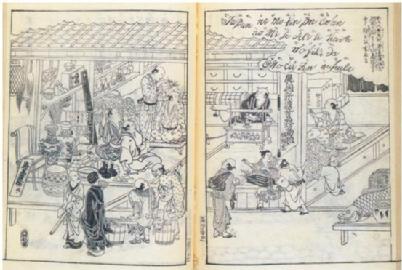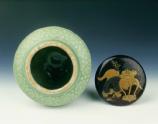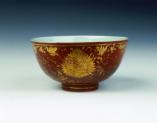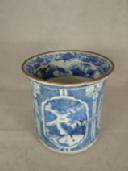Chinese Ceramics & the Early Modern World
5. The Japanese Market
 and large storage jars
and large storage jars , many of which were imported from the coastal kilns of southern China, but they also imported large quantities of blue-and-white porcelain from Jingdezhen.
, many of which were imported from the coastal kilns of southern China, but they also imported large quantities of blue-and-white porcelain from Jingdezhen. 
Woodblock print from Settsu meisho zue 攝津名所圖會 [Collected illustrations of famous places in Settsu] by Akisato Ritō 秋里籬島 (fl. 1780-1814). 1796-98. Illustration by Takehara Shunchōsai 竹原春朝齋 (d. 1800) depicting Chinese porcelain for sale in a foreign goods shop.
It was not until the seventeenth century that the Japanese began to develop their own porcelain manufacture, a development that coincided with the period of social and political unrest that marked the transition between the Ming and Qing dynasties in China. Dutch merchants, who had been relying on large quantities of imports from Jingdezhen to satisfy the demands of their European customers, encouraged the potters at Arita in Japan to produce very similar blue-and-white products, and began to ship these in large quantities via Deshima, their island base in Nagasaki harbour, to Batavia. One seventeenth-century Dutch observer wrote: ‘The Japanners grow every Year more and more experience’d in this Art; so that they make their Porcelan better and better.’




